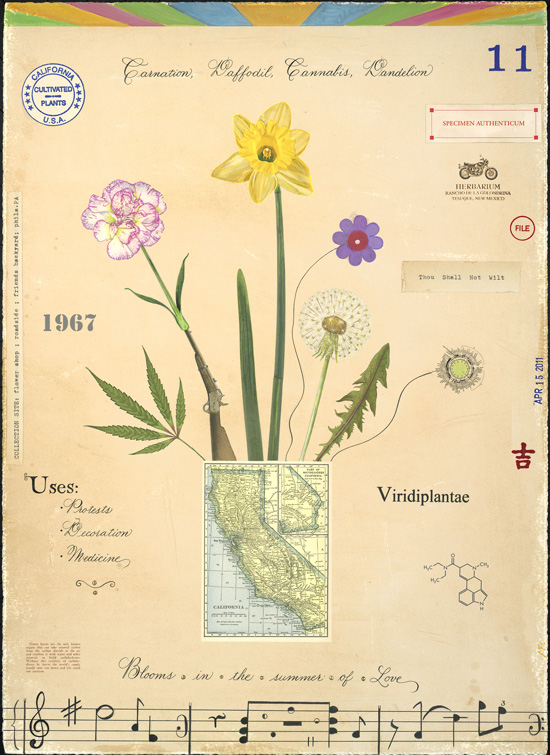The Herbarium Specimen Reimagined
By blending elements of 18th and 19th century botanical illustrations with the imaginative randomness of Dada and Surrealist collage methods, MF Cardamone creates playful interpretations of the intersection of nature, taxonomy, and popular culture. Cardamone collects plant specimens and combines them with images and words, resulting in complex visual narratives that reveal the science, history, and beauty of her subjects.
Cardamone first started making art in 1980 under the guidance of Tom Palmore, a noted contemporary Southwest artist who paints highly detailed, yet ironically humorous animal portraits. Through her experiences with Palmore, she became attuned to looking beneath the surface of her subject matter to interpret the world around her from a personal perspective, rather than a strictly empirical one. During this time, Cardamone focused on the traditional and contemporary folk art of Chimayo in rural New Mexico, creating highly textured and brilliantly colored sculptures.
In 2003, she began to conduct research on native plant collecting. As a scientific exercise, she created herbarium sheets to document observations of plants as field notes. Learning about horticulture had a profound impact on Cardamone. From her studies, she gained a deeper understanding of the inner structures of botanicals and ecological systems. Finding the herbarium tradition an intriguing starting point to address nature as an art form, Cardamone combined her interest in medieval herbals and manuscripts, folklore, traditional Chinese medicine, and pop art to create lively digital collages. To Cardamone, the anatomy of a plant is part of a larger story that involves historical, medicinal, ecological, spiritual, and mythological elements.






Images courtesy of MF Cardamone.

